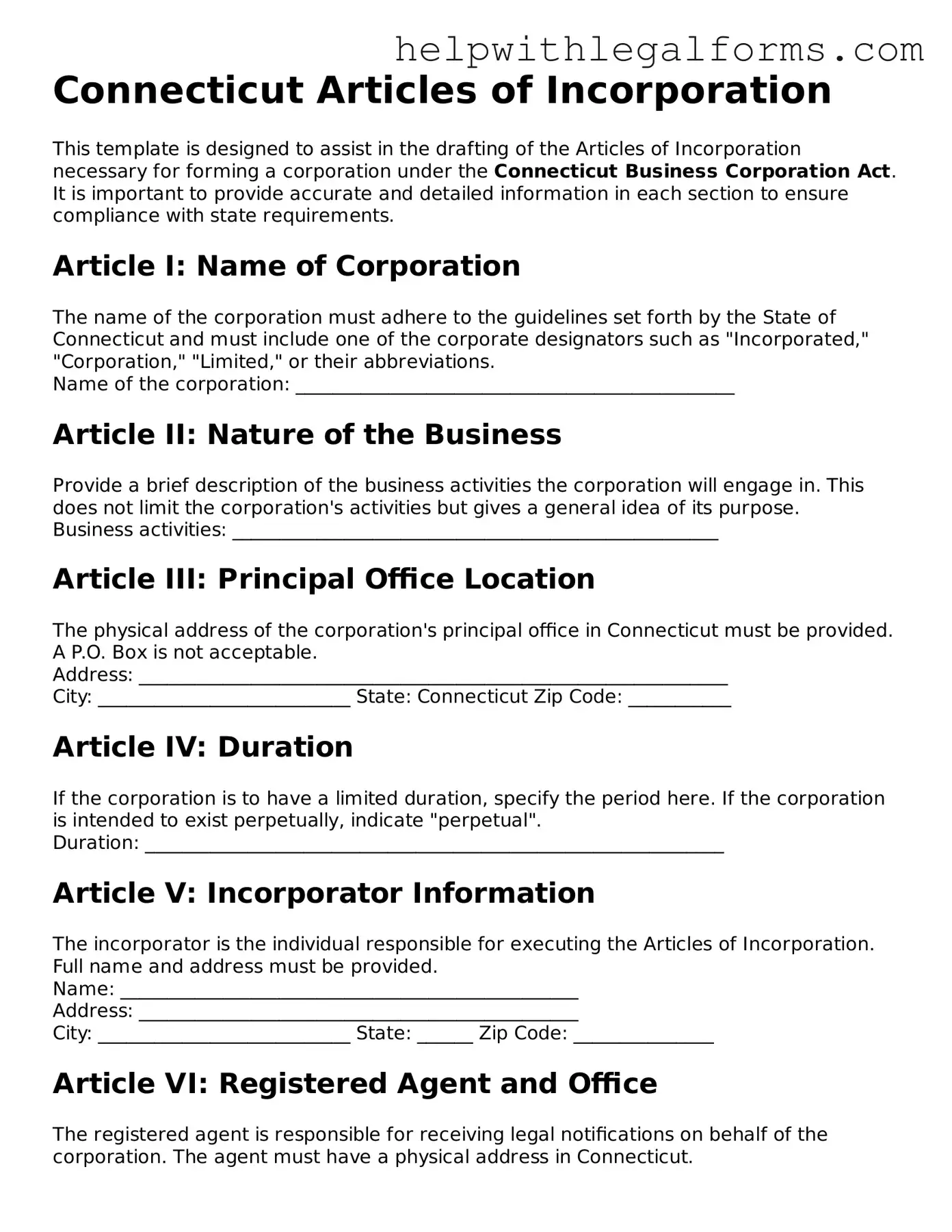Connecticut Articles of Incorporation
This template is designed to assist in the drafting of the Articles of Incorporation necessary for forming a corporation under the Connecticut Business Corporation Act. It is important to provide accurate and detailed information in each section to ensure compliance with state requirements.
Article I: Name of Corporation
The name of the corporation must adhere to the guidelines set forth by the State of Connecticut and must include one of the corporate designators such as "Incorporated," "Corporation," "Limited," or their abbreviations.
Name of the corporation: _______________________________________________
Article II: Nature of the Business
Provide a brief description of the business activities the corporation will engage in. This does not limit the corporation's activities but gives a general idea of its purpose.
Business activities: ____________________________________________________
Article III: Principal Office Location
The physical address of the corporation's principal office in Connecticut must be provided. A P.O. Box is not acceptable.
Address: _______________________________________________________________
City: ___________________________ State: Connecticut Zip Code: ___________
Article IV: Duration
If the corporation is to have a limited duration, specify the period here. If the corporation is intended to exist perpetually, indicate "perpetual".
Duration: ______________________________________________________________
Article V: Incorporator Information
The incorporator is the individual responsible for executing the Articles of Incorporation. Full name and address must be provided.
Name: _________________________________________________
Address: _______________________________________________
City: ___________________________ State: ______ Zip Code: _______________
Article VI: Registered Agent and Office
The registered agent is responsible for receiving legal notifications on behalf of the corporation. The agent must have a physical address in Connecticut.
Name of registered agent: _______________________________________________
Office address: ________________________________________________________
City: ___________________________ State: Connecticut Zip Code: ___________
Article VII: Number of Shares
The corporation must authorize a certain number of shares. Specify both the total number of shares the corporation is authorized to issue and, if applicable, the classification of shares.
Total authorized shares: ________________________________________________
Classifications (if any): ________________________________________________
Article VIII: Directors
List the names and addresses of the initial directors who will serve until the first annual meeting of shareholders or until their successors are elected.
- Name: _____________________ Address: ____________________________
- Name: _____________________ Address: ____________________________
- Name: _____________________ Address: ____________________________
Article IX: Additional Provisions
Include any additional clauses here, such as indemnification of officers and directors, initial bylaws, or any restrictions on activities.
Additional provisions: __________________________________________________
Article X: Declaration
The incorporator must declare that the information provided in the Articles of Incorporation is accurate and submit the document to the Connecticut Secretary of State for approval. A statement such as "I, the undersigned, as incorporator, hereby declare that this document and the information contained therein is accurate and complies with the Connecticut Business Corporation Act." followed by a space for the date and signature.
Date: _____________________ Signature: ___________________________________
